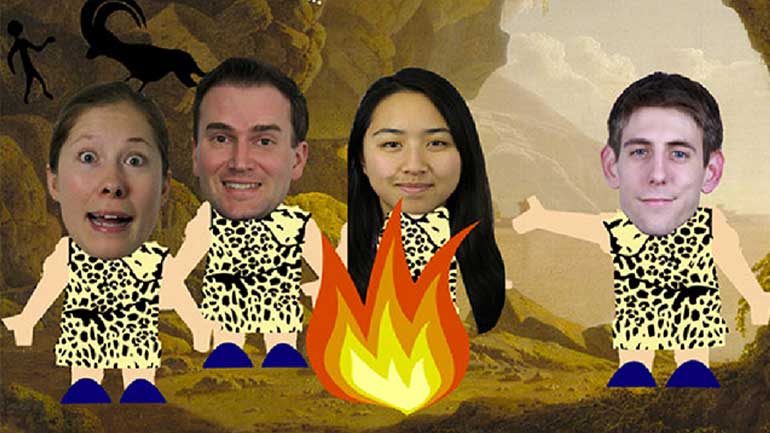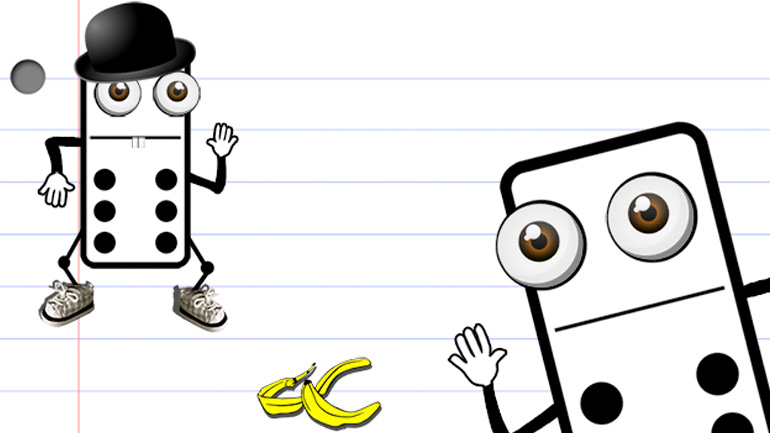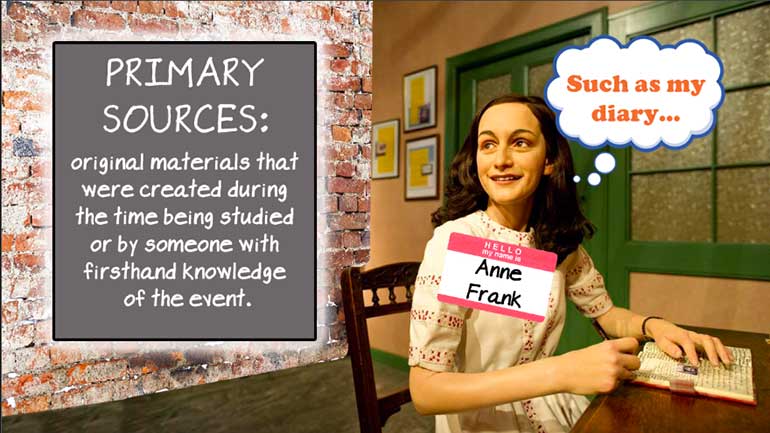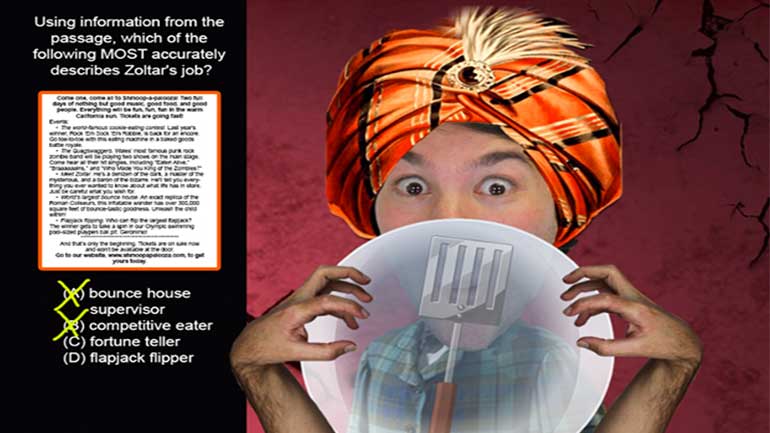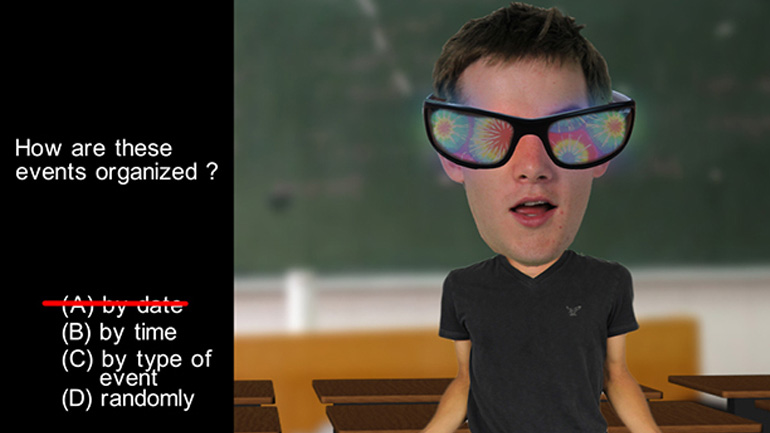ShmoopTube
Where Monty Python meets your 10th grade teacher.
Search Thousands of Shmoop Videos
Writing Videos 89 videos
Want even more deets on wordiness? Click here to review. Or take a look at our entire grammar section for all the goods.
Want even more deets on tenses? Click here to review. Or take a look at our entire grammar section for all the goods.
Want even more deets on semicolons? Click here to review. Or take a look at our entire grammar section for all the goods.
ELA 5: Writing a Paragraph 101 1131 Views
Share It!
Description:
Historians are still debating whether or not the first paragraph was written by a caveman named Krog.* While they're busy debating, you should watch this video to learn how to create a paragraph yourself. *Note: Historians aren’t debating this at all. Like...not even a little bit.
Transcript
- 00:04
[Coop and Dino singing]
- 00:13
“Paragraph”…that must be some kind of…graph, right?
- 00:16
With diagonal lines…maybe some pretty, colored bars? [A line and a bar graph on a whiteboard]
- 00:20
No? It’s not a graph at all? Ugh. Way to go, English.
- 00:25
A paragraph…in short… is a small, self-contained unit of writing.
Full Transcript
- 00:29
We’re not talking a little love note on a napkin… [A woman reading a love note on a napkin]
- 00:32
…but a portion of writing that consists of more than one sentence…
- 00:37
…and is used to separate ideas in a longer piece of writing. [A letter on a piece of paper stuck on a fridge]
- 00:40
So, you know…your eyes don’t bug out of your head trying to look at something like this…
- 00:45
Non-fiction paragraphs are usually a little more structured than fiction ones. [A selection of books on a shelf]
- 00:49
Those fiction writers…they like to make up their own rules sometimes.
- 00:53
But most paragraphs you’ll come across follow some tried-and-true guidelines…
- 00:58
They’re usually between five and seven sentences in length… [Coop giving details on guidelines for paragraphs]
- 01:01
…they present a main idea or topic sentence, usually right up front…
- 01:04
…they then have between three to five sentences supporting that main idea…
- 01:08
…and, finally, a concluding sentence that wraps everything up nicely and neatly, with
- 01:13
a pretty little bow on top. [A hand places a bow on Coops chalkboard]
- 01:15
For instance, here’s a piece of writing that we… grudgingly admit would be considered a paragraph:
- 01:20
“I would not like to get eaten by a bear. It would be painful, for bears have very large claws.
- 01:26
Bears also have very large teeth. It would also make my mother sad if I were eaten by a bear.
- 01:31
Therefore, I have started avoiding areas with bears in order to avoid being eaten.”
- 01:36
Okay, so…probably not going to win the Newberry Medal, but… at least it ticks all the right boxes. [A man on stage rejected for a Newberry Medal award]
- 01:43
In this example, the first sentence delivers the topic we’ll be focusing on for the rest
- 01:47
of the paragraph:
- 01:48
…the possibility of being eaten by a bear.
- 01:50
That concept definitely has something to do with…everything else in the paragraph… [Paragraph highlighted yellow in a notebook]
- 01:55
…and all the lines that follow serve to support the idea that that would be...
- 01:59
uh…well, it would be a bad thing. [A bear appears]
- 02:03
Then there’s the last sentence…
- 02:05
…where the author kicks things off with a pretty clear-cut “therefore”…
- 02:09
…and then wraps things up by restating the original idea of the paragraph.
- 02:13
But he doesn’t just restate it…
- 02:15
he also draws a conclusion formed from all those supporting sentences…
- 02:19
…in this case, that avoiding bear hang-outs would probably be a smart thing to do.
- 02:24
Remember, though… usually a paragraph is followed by…many more paragraphs. [A paragraph joined to more paragraphs]
- 02:28
So it could be that the paragraphs that follow this one…go into even more detail about
- 02:33
why getting eaten by a bear is bad, why you should steer clear of them, et cetera.
- 02:38
So if we were to read on…we should be able to see a flow from this paragraph to the next one.
- 02:44
Maybe in the next paragraph…we’ll learn that the best way to avoid detection is to [A man wearing a full-body salmon suit in the woods]
- 02:47
disguise yourself in a full-body salmon suit.
- 02:50
But…probably not. [A bear appears behind a rock]
Related Videos
Check out the best bias video ever made, courtesy of the most awesome and amazing educational website in existence.
No, this isn't a terrible new mint-peach bubble gum flavor...though it does tend to leave a bad taste in people's mouths.
Those settlers in Jamestown really should have settled down with all that land-stealing. Tobacco's bad for you anyway.
Being born out of multiple wars doesn't quite seem to fit the peaceful, polite Canadians we know and love today...oh wait, they were called The Bea...
Not every cartoon is meant to entertain small children while their mother gets some "Mommy time." There are also political cartoons, which are mean...





















































